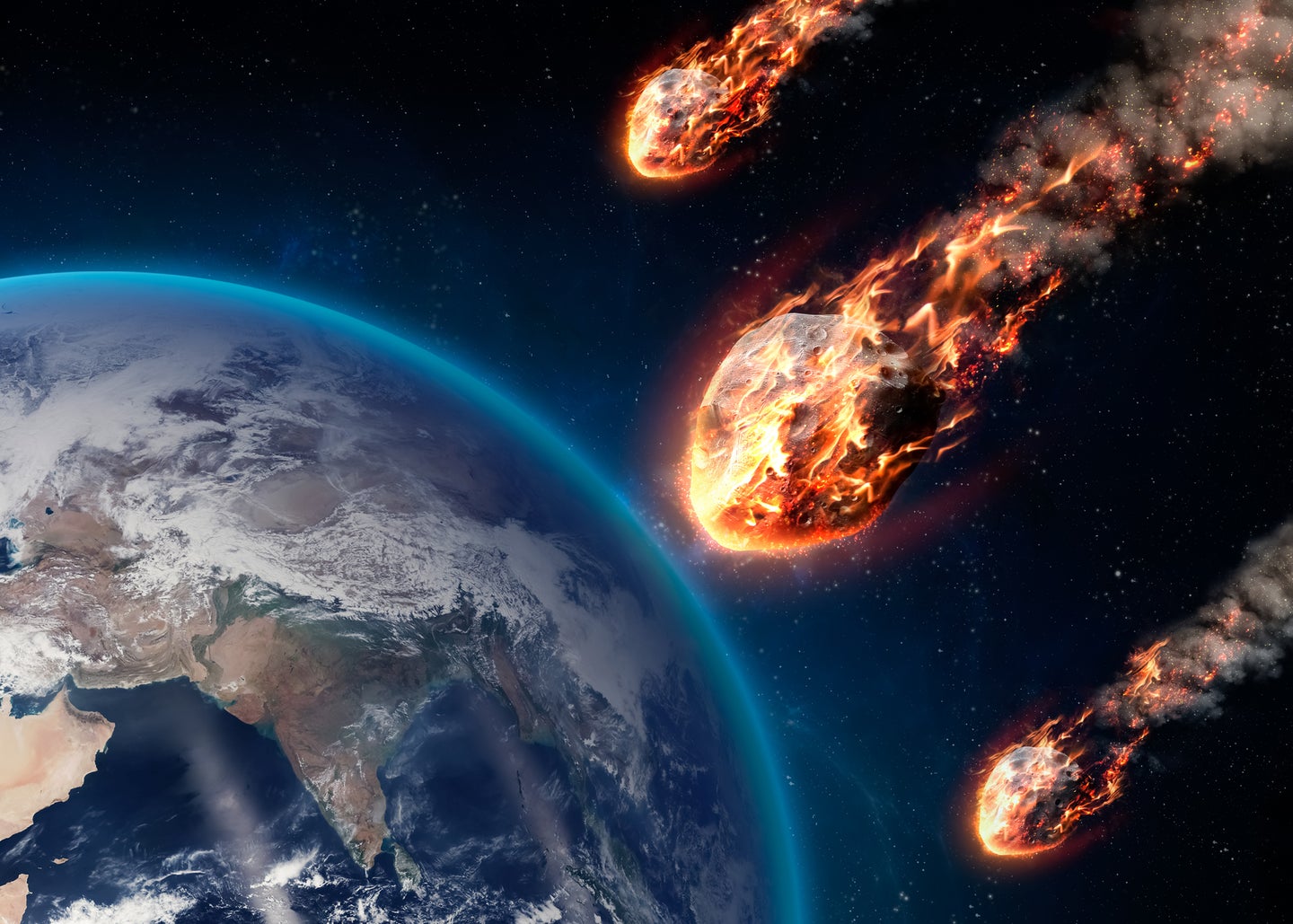After a flurry of satellite launches and its second crewed mission to build a space station, China is now planning to strike near-Earth asteroids.
Speaking on the occasion of China’s Space Day, Wu Yanhua, deputy director of the China National Space Administration (CNSA) disclosed plans to build an asteroid monitoring and defense system to track and attack asteroids to alter their orbit. Beijing plans to launch this by 2025.
China Dumps Russian Ka-28 For New ‘Submarine-Hunter’ Helicopter; Aims To Check US Naval Activity In SCS
In an interview with the China Central Television, Wu said that China will proceed to set up a near-Earth asteroid monitoring and defense system to deal with the threat of asteroids impacting spacecraft and contribute to protecting the safety of the Earth and mankind
This marks the first time that China has revealed a specific roadmap for defense against near-Earth asteroids. Zhang Kejian, director of the CNSA, said in April last year that China would set up a system to deal with asteroid hazards, but he did not elaborate.

CNSA is reportedly developing simulation software for possible impact from near-Earth asteroids and will organize rehearsals for the defense process to address the threat. According to mission insiders cited by the Global Times, the software system is currently at the project establishment phase and being reviewed for approval.
By 2025 or 2026, CNSA plans to carry out an experimental mission to launch a craft to observe and then take action against a particular asteroid, which the Chinese scientists believe poses potential hazards.
“We will use the experiment to verify technologies and methods on how to deflect an asteroid heading for Earth. It will allow us to explore ways to avoid extraterrestrial bodies’ threat to Earth,” said Wu in another interview.
Similar projects are in the pipeline of NASA and the European Space Agency (ESA), which have already begun experiments involving space and ground-based assets to track and warn about asteroids moving towards Earth.
Song Zhongping, a military expert and space observer, told the Global Times that currently, the US and Russia are also building asteroid monitoring systems, and China’s defense system could be an important supplement in addressing the threats of asteroids hitting Earth.
“This is another practical solution that China proposes to build for a shared future for mankind, and it is the duty of a major space power to protect mankind from possible disasters that could end human civilization,” Song said.
Last year in July, scientists from China’s National Space Science Center proposed to divert an asteroid known as Bennu which is on track to pass within 4.6 million miles (7.5 million kilometers) of Earth’s orbit sometime between 2175 and 2199.
The scientists calculated that 23 Long March 5 rockets, each weighing 992 tons (900 metric tons), pushing against the rock simultaneously would be necessary to divert the asteroid away from its dangerous course by approximately 6000 miles (9000 km) – 1.4 times the radius of Earth.
While, Bennu’s chances of striking Earth are slim — at just 1 in 2,700 — the asteroid is as wide as the Empire State Building’s height, meaning that any collision with Earth would be cataclysmic.
“By looking at the impact craters of various sizes on the moon, it is obvious that asteroid impact is not that unusual or unrealistic for mankind,” Li Mingtao, professor at the National Space Science Center under the Chinese Academy of Sciences, told the Global Times.
According to Li, currently, the most practical measure to avoid such an impact is by hitting a threatening asteroid and changing its original course.
Reports suggest that if Bennu was to hit Earth, the impact would have a kinetic energy equivalent to 80,000 Hiroshima nuclear bombs, about 1,200 megatons.
NASA currently has a mission, called OSIRIS-Rex which is on its way to Earth after collecting material samples from Bennu. The asteroid was selected because it is a remnant of the early Solar System and it could be of help in understanding the beginning of the Earth. OSIRIS-REx left Bennu in May 2021 and will return to Earth next year in September 2023.
NASA has a plan, called Hypervelocity Asteroid Mitigation Mission for Emergency Response (HAMMER) which would involve sending a fleet of 30-foot-tall (9 meters) spacecraft with battering rams to bump the asteroid off course. NASA simulations suggest that 34-53 blows from HAMMER spacecraft, launched ten years before Bennu collides with Earth, would be needed to shift the asteroid.
The US Agency has also launched an experimental mission to assess the future potential of a spacecraft impact to deflect an asteroid on a collision course with Earth. The mission is called the Double Asteroid Redirection Test (DART) and was launched from Earth in November 2021.
It will deliberately crash a space probe into the minor-planet moon Dimorphos of the double asteroid Didymos. The collision is planned to take place between September and October of this year. Following this, the ESA’s mission, Hera, will then monitor how DART has budged the moonlet off course.
The most recent instance of an asteroid impact on Earth was in 2013 in Russia’s Chelyabinsk when an approximately 18-meter-diameter near-Earth asteroid entered the atmosphere and exploded 30 kilometers above the ground. Its power was equivalent to about 30 atomic bombs, damaging over 3,000 houses and causing over 1,500 injuries.
- Written by Tanmay Kadam/EurAsian Times Desk
- Contact the author at etdesk@eurasiantimes.com
- Follow EurAsian Times on Google News